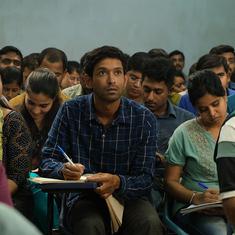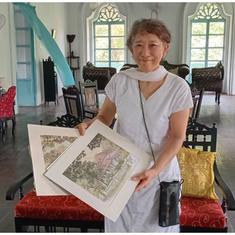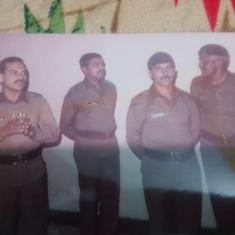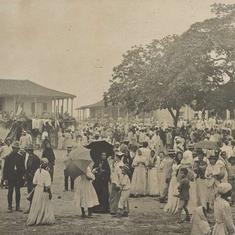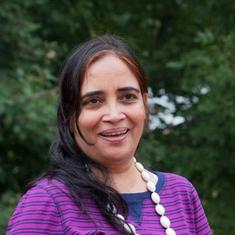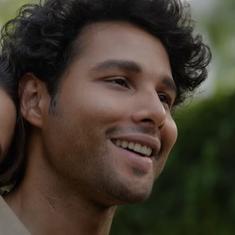“It would be fun… it would be fun to have a blindfold match against the sighted players,” said Kishan Gangolli, India’s four-time reigning Blind Chess champion.
It would be fun because if one robs the ‘sighted’ players of their sight, then the blind chess players are on a completely even keel. The rules for Blind Chess are exactly the same as that of mainstream chess – right down to the time controls.
Perhaps, it would not be as much fun for most sighted players. But it is the kind of thing, Gangolli often wonders about.
It is not an empty dream either – blindfold matches do take place from time to time and in the past blind chess players have not only taken on some top GMs in mainstream games but in some instances, they have beaten them too.
In 1994, the International Braille Chess Association (IBCA) became a full member of FIDE and since then, an international team of blind players is allowed to take part in Chess Olympiads for the sighted people, on the same basis as national teams. In the 1999 Chess Olympiad, a team representing IBCA held the Indian ‘sighted’ team to a 2-2 draw. In 2006, during the 36th Chess Olympiad IBCA’s IM Krylov Sergey (2387) drew with Super GM Vassily Ivanchuk, who has been ranked as high as World No 2.

Gangolli is visually impaired – he has only 25% of his vision. He can read a book but only if it is at a distance of 8-10 cm away from his eyes. He has trouble distinguishing colours and sometimes, it is all a haze. But once on the chess board, his mind’s eye takes over. It is, if anything, a liberating experience.
“Naturally, we form an image in the head. The board, the pieces, the various combinations are all there. Our special power is imagination,” said Gangolli. “In that aspect, we are second to none.”
There are subtle changes in Blind Chess though. For sighted players, their primary input is visual. For visually impaired players, the primary input comes through touch. So while the pieces look the same, the black pieces have a pin fixed on their heads to help distinguish between black and white pieces. The black squares are also raised about 3-4 mm above the white squares. After making a move, the players have to say their moves out loud too.
The players are also allowed to touch the pieces (in mainstream chess, you have to move the piece you touch) to ascertain their position.
Still, chess is a pretty complex game with millions of permutations and combinations for many positions and to play it without being able to see requires a special kind of genius. Gangolli, though, has that genius is abundance.
He recently won the IBCA Asian Chess championship and he is so much better than the next FIDE-ranked player in India that even drawing a game means that he loses points. He lost around 17 points after winning the recent national championship which saw his ELO rating go down to 1974. However, it was once as high as 2064.
Just for reference, at his best, Vishy Anand had an ELO rating of over 2800. An international master has a rating of around 2400.
Asia isn’t a very strong blind chess region but Kishan knows he has come a long way since his uncle started teaching him chess in the 6th standard.

“My uncle was interested in the game but for some reason he couldn’t play it. However, when he saw that I have an aptitude for it, he took me to an academy.”
Soon, Gangolli was good enough to play in sighted tournaments. In fact, it wasn’t until 2011 that he realised there were tournaments for the blind too and that is when he made the switch.
“I just wasn’t comfortable enough on sighted boards. There were just too many things to worry about but braille boards are much easier. It allows us to play – just play.”
Still, Blind Chess does face other issues – money and recognition being the primary concerns. The Indian government does not recognise the Indian Blind chess association. It essentially means no grants to travel or help the sport grow, no jobs and also no recognition. The captain of India’s blind cricket team, Shekhar Naik, was recently awarded the Padma Shri – but as things stand, India’s blind chess players will never be eligible for such honours.
The bigger issue is money. As Charudatta Jadhav, the president of India’s blind chess association argues: “It may seem churlish to complain but the only way our players can get a higher rating is if we play in tournaments abroad but that is an expensive proposition.”
So for now, Jadhav has devised a strategy that allows blind chess players to play tournaments in India itself. The blind chess Olympiad has been organised in India and so have other tournaments – all with the goal of giving Indian players a chance of competing in rated tournaments.
“In the past, we invited sports ministers like Mani Shankar Aiyyar and Ajay Maken for our events. They came, had a look and praised the events. But nothing came out of it. We invited Vijay Goel for the Asian Chess Championship recently but he couldn’t make it. Still, when many European countries give special status to blind chess, why can’t India?” wonders Jadhav.
Gangolli, on an average, plays around one tournament abroad each year – which is clearly not enough. The only way to get better is to take on stronger opponents and as things stand – there just aren’t enough of them in India. So being too good almost seems to be a bit of a problem.
For now, though, Gangolli has set his sights on becoming an International Master. India has never had one but that, of course, isn’t going to stop him. After all in chess, you make one move but you always think several moves ahead.
“The Russians are good – they have 14 IMs – but one day, I want to be world champion.”
One asks, ‘a world champion like Magnus Carlsen?’ and he guffaws.
“Nah, it takes too much time to understand his moves.”

